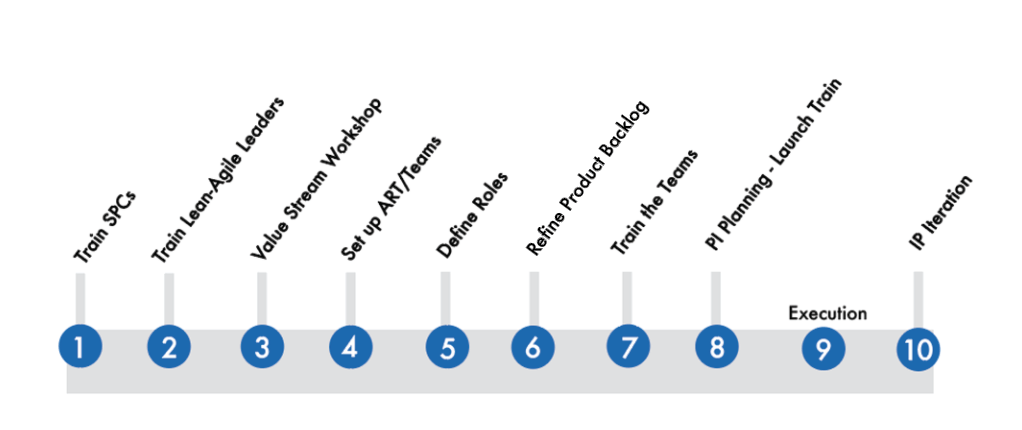10 Steps to Launching Your First SAFe Agile Release Train
What does an ART launch typically look like? The steps in this article outline what a typical ART launch requires and can help get you started.
Join the DZone community and get the full member experience.
Join For FreeSo you've been excited about Agile for quite some time. You're even more excited now that you learned about the Scaled Agile Framework (SAFeTM) and how it helps organizations scale and successfully implement complex projects, deliver business value and do it on time and under budget! If you even took a cursory look at SAFe you probably heard of the concept of the Agile Release Train (ART).
Just as a train delivers its passengers to a destination within a specific cadence, the ART is the primary mechanism of value delivery to the end customer. It is a self-organizing team of Agile teams, composed of "passengers" from various parts of the organization (Development, Security, DevOps, Enterprise Architecture, etc.) that plans, commits and executes together, and they do this within a specific timebox called a Program Increment (PI). The ART team (50-125 people) is designed to align teams to a common business and technology mission, allowing organizations to respond to marketplace changes faster and deliver value faster.
So what does an ART launch typically look like? The steps below outline what a typical ART launch requires and can help get you started.

1) Train SAFe Program Consultants (SPCs)
SPCs are change agents who lead the transformation and connect the Scaled Agile Framework to your enterprise. They teach the company's leaders and stakeholders and act as coaches and trainers that lead the Agile Release Trains (ARTs).
2) Train Lean Agile Leaders
Lean Agile leaders understand the principles and philosophy of the framework (practices, roles activities, and artifacts) and base decisions on these. They also take on the responsibility to lead and facilitate SAFe adoption within the company and help improve business outcomes.
3) Perform a Value Stream Workshop and Identify your FIRST ART
Value Streams are a sequence of steps that optimize the value of delivery to the customer. The purpose of a value stream workshop is to
Understand and identify Value streams for your organization
Select your first Value Stream
Identify your first ART
4) Define/Setup the ART and Teams
Best practices for setting up an Agile Release Train:
Have a clear, defined "product"
Gain Leadership support
Establish collaboration
Significant challenge or opportunity
Agile Teams are formed based on:
Features/Components
Minimizing dependencies
Integration addressed
DevOps activities being performed
5) Fill important roles
Critical roles include:
Release Train Engineer
System Architect
Product Management
Scrum Masters
Product Owners
Customer
6) Prepare and Refine the Program Backlog
Product Managers and other senior managers build a list of features to clearly articulate the vision, which is broken down into stories for the teams.
7) Train the Teams
Train teams on SAFe for a common, baseline understanding of the framework and set a date for the launch.
8) Conduct PI Planning and Launch ART
All participants meet face to face
Teams complete plans, assign work and Plan and commit PI objectives
Identify dependencies and disposition risks
9) Execute the Program Increment
Key Program events:
PI Planning, System Demo (every 2 weeks), Inspect & Adapt workshop
Architectural Runway
Common Cadence so that teams are synchronized
10) Execute the Innovation and Planning (IP) Iteration
The IP Iteration is the final 2-week sprint that accomplishes the following:
Absorb estimate variances
Build in time for innovation
Refining backlog for upcoming PI planning
Conduct Inspect & Adapt (I&A) workshop
Remember that SAFe is NOT a prescriptive entity, and some of the steps can be adjusted to meet specific organizational needs and objectives. Launching an ART can be challenging, so having experienced team members to guide you through will also ensure that your goals can be met.
Contact us to help launch your first Agile Release Train!
Published at DZone with permission of Krista Trapani, DZone MVB. See the original article here.
Opinions expressed by DZone contributors are their own.

Comments